Goddess Bhavani is one of the most revered and powerful deities in Hinduism, often worshipped as a fierce manifestation of Shakti, the primordial cosmic energy. As a protector and a nurturer, she embodies the strength to destroy evil and protect the righteous while offering compassion and protection to her devotees. Worshipped in various forms across India, especially in Maharashtra and Kashmir, she plays a significant role in the spiritual lives of millions.
In this article, we will delve into the identity of Goddess Bhavani, her connections with Lord Shiva, and the symbolic elements that define her divine energy. We will also explore her significance in Hinduism, her iconography, and how her worship can bring spiritual, mental, and material benefits. This article will provide a comprehensive overview of Goddess Bhavani, focusing on her role in the Hindu pantheon, her importance in various regions, and the rituals associated with her worship.
Who is Goddess Bhavani?
Goddess Bhavani is a formidable aspect of Adi Parashakti, the primal force that underlies the creation and functioning of the universe. She is the embodiment of divine energy, manifesting both the nurturing and protective elements of Shakti while also possessing the fierce strength to combat evil forces. Known for her role in destroying demons and maintaining cosmic harmony, Goddess Bhavani stands as a symbol of power, valour, and transformation, revered by devotees seeking strength, protection, and the courage to overcome life’s battles.
Identity and Role in the Hindu Pantheon
Goddess Bhavani is considered the ultimate form of the feminine energy, embodying the essence of creation, destruction, and protection. In her form as Adi Parashakti, she is the supreme energy that governs all existence. She is the embodiment of strength, fearlessness, and compassion, revered for her ability to protect the righteous and destroy evil. As the cosmic mother, she is the source of life and protection, ensuring the preservation of order in the universe.
Her fierce form is invoked by devotees who seek her blessings for victory over evil, inner strength, and spiritual empowerment. Worshipped for her ability to eliminate suffering and bestow courage, Bhavani holds a special place in the hearts of millions of devotees, particularly in regions like Maharashtra and Tamil Nadu.
Associated Elements
Vahana (Vehicle): Goddess Bhavani’s vahana is the lion, symbolizing strength, courage, and leadership. The lion is an embodiment of power and fearlessness, representing the qualities that Bhavani bestows upon her devotees.
Weapons: Goddess Bhavani is depicted wielding numerous weapons, symbolizing her role as the warrior goddess:
Trident (Trishul): A symbol of destruction of evil and the protection of cosmic order.
Sword: Representing justice and the ability to cut through ignorance.
Dagger: A symbol of quick action.
Conch (Shankh): Used to purify the atmosphere and ward off negative energies.
Bow and Arrow: Representing defence of the righteous and the attack on evil.
Goddess Bhavani’s lion vahana and weaponry signify her powerful, fierce nature and her role as the divine protector, capable of defending her devotees from all harm.
Significance of Goddess Bhavani
In this section, we explore the philosophical and spiritual significance of Goddess Bhavani, shedding light on her deep spiritual role and how her worship connects to the universal flow of energy.
Philosophical and Spiritual Significance
Goddess Bhavani is a representation of the ultimate divine power that sustains and protects the cosmos. She embodies Adi Parashakti, the primal cosmic energy that both creates and destroys. Her fierce form symbolizes the balance between the forces of creation and destruction. Devotees believe that by invoking her, they can overcome personal demons, negative influences, and obstacles that hinder spiritual and personal growth. Bhavani's worship is not just about seeking protection from physical harm, but also about attaining spiritual enlightenment and liberation from the cycle of ignorance and suffering.
Her presence reflects the destruction of the ego, which is central to the process of spiritual awakening. Bhavani's fierce, yet compassionate nature, provides devotees with the strength to face life's challenges, encouraging them to rise above fear and adversity. She represents divine justice, and through her blessings, devotees are empowered to uphold righteousness and truth.
Importance in Specific Regions or Sects
Goddess Bhavani holds immense significance, particularly in the state of Maharashtra, where she is seen as a symbol of strength and courage, worshipped for her divine role in protecting and guiding the righteous. The most prominent temple dedicated to her is the Tulja Bhavani Temple in Tuljapur, Maharashtra, a highly revered site where Chhatrapati Shivaji Maharaj, the founder of the Maratha Empire, sought her blessings. Her worship is also deeply rooted in the Shaktism tradition, where she is seen as a fierce form of the Divine Mother.
Beyond Maharashtra, Goddess Bhavani is worshipped across Tamil Nadu, Karnataka, and Andhra Pradesh, with significant temples and shrines dedicated to her throughout South India. In Kerala, she is revered as the embodiment of Durga and Shakti, while in Madhya Pradesh and Rajasthan, her worship is associated with Tantric rituals and protection from negative energies.
Festivals Dedicated to Goddess Bhavani
Several festivals are dedicated to honouring Goddess Bhavani across India, with special significance placed on the days that celebrate her fierce and protective nature.
Bhavani Jayanti: This festival celebrates the birth of Goddess Bhavani, and it is observed during the Chaitra Navratri period. It is a time for devotees to perform rituals, offer prayers, and invoke her blessings for strength and protection. The day is marked by Panchamrit Abhishek, mantra chanting, and fire rituals to honour her divine energy.
Tulja Bhavani Fair: Held at the Tulja Bhavani Temple in Tuljapur, Maharashtra, this fair takes place annually during Navratri and is one of the most significant events in honoring Goddess Bhavani. Devotees come from all over the country to participate in pujas, bhajans, and processions to seek her divine blessings.
Shukla Paksha Ashtami: A festival observed in honour of Goddess Bhavani, where devotees fast and perform rituals in her temple. This day is considered to bring spiritual purification and is particularly important in Maharashtra and southern states.
By participating in these festivals, devotees not only seek the blessings of Goddess Bhavani but also immerse themselves in rituals and prayers that allow them to connect with her divine energy, ensuring victory over adversity and spiritual empowerment.
Iconography & Symbolism of Goddess Bhavani
Goddess Bhavani is depicted with distinct physical traits and symbolic elements, each representing her fierce power and protection. The visual representation of Goddess Bhavani varies in art, sculptures, and temple depictions, reflecting her multifaceted role as the divine feminine power.
Physical Appearance of Goddess Bhavani
The idol of Maa Bhavani is carved from black stone, radiating a sense of both awe and compassion. Her divine face is serene yet powerful, with large, expressive eyes that appear to gaze directly into the soul of the devotee. She wears a towering, ornate golden crown, signifying her supreme authority and status as Adi Parashakti.
She is adorned with layers of intricate gold ornaments, from her neck to her feet, covering her in divine splendor. These ornaments represent her abundance, prosperity, and the richness of her divine presence. Draped in a red saree, which symbolizes power, strength, and auspiciousness, Bhavani Devi radiates maternal protection and fearless sovereignty.
A prominent halo or aura is often seen behind her head, indicating her divinity and status as a goddess beyond time and space. Despite her richly adorned form, her stance is grounded, evoking strength, readiness to protect, and compassion all at once.
In temple representations like at Tuljapur, she is usually seen holding weapons in her multiple hands and standing triumphantly over the demon Mahishasura, though in this specific form, she is in peaceful darshan posture, receiving and blessing her devotees.
Colour Symbolism, Posture, and Mudras of Goddess Bhavani
Colour Symbolism
In the image, Maa Bhavani is adorned in a rich red saree, which holds deep symbolic meaning in Hindu worship. The colour red signifies Shakti (divine energy), courage, auspiciousness, and the power to protect and transform. Her saree, complemented by layers of intricate golden jewellery, highlights her role as a nurturer and sovereign. Gold represents abundance, spiritual wealth, and her status as the eternal mother of prosperity and strength. The blue aura behind her head further emphasizes her divinity, representing infinity, truth, and cosmic depth.
Posture
In this particular form at the Tuljapur temple, Maa Bhavani is seen in a standing posture, offering darshan (divine audience) to her devotees. Unlike her fierce battlefield depictions, here she stands calm, centred, and benevolent, reflecting her role as a protector and guide. Her upright and grounded stance represents stability, readiness to bless, and spiritual strength.
Mudras
Though her hands are not raised in traditional mudras in this idol form, the overall posture and gaze reflect an implicit Abhaya Mudra. The gesture of fearlessness and protection and Varada Mudra, the bestowing of boons. Her eyes are intense and compassionate, as if absorbing the prayers of the devotee and offering silent reassurance of divine presence and grace.
Birth and Origin of Goddess Bhavani
The origin of Goddess Bhavani is deeply rooted in various Hindu scriptures and regional legends; each highlighting her divine emergence to uphold dharma and destroy adharma. She is regarded as a powerful incarnation of Adi Parashakti, the eternal cosmic energy.
Scriptural Origins
According to the Shiva Purana, Goddess Bhavani is the consort of Lord Bhava (Sadasiva) and is worshipped as the supreme Shakti, embodying the divine energy necessary for creation, preservation, and destruction. In the Devi Bhagavatam, she is considered a direct manifestation of Aadi Parashakti, the source of all divine feminine forms.
Another significant reference comes from the Skanda Purana, which links the origin of Tulja Bhavani to a sacred event involving a sage named Kardam and his wife Anubhuti. After Kardam’s death, Anubhuti performed penance near the Mandakini River in the Yamunachala Hills, seeking the Goddess’s protection for her infant son. In response to her intense devotion, Bhavani Devi manifested and destroyed the demon Kukur, who had been troubling Anubhuti. This divine appearance marked the birth of the Tulja Bhavani form, and the site later became the location of the famous Tulja Bhavani Temple in Maharashtra.
Avatar Stories and Mythical Connections
Goddess Bhavani is also associated with the slaying of the demon Mahishasura, earning her the title Mahishasura Mardini. Though this tale is more widely attributed to Goddess Durga, in several regional traditions, Bhavani is the form who manifests during this cosmic battle, showcasing her as the fierce protector of the righteous.
The Devi is also said to have blessed Lord Rama and Hanuman before the great battle in the Ramayana, offering divine support to uphold dharma. These further cements her status as a guardian of righteousness across Yugas.
Additionally, Tulja Bhavani is considered Swayambhu (self-manifested), and her presence across all four Yugas, Treta, Dwapara, and Kali, is celebrated in various oral and scriptural traditions.
Legends and Stories of Goddess Bhavani
The legends surrounding Goddess Bhavani highlight her as a fierce divine force who appears in critical moments to restore cosmic balance. Her stories reflect her protective nature, her compassion toward devotees, and her relentless power against evil.
The Legend of Demon Matang
One of the prominent stories tells of the asura Matang, who wreaked havoc across the three worlds, tormenting devas and humans alike. Seeking relief, the gods approached Lord Brahma, who advised them to pray to the Divine Mother. Responding to their plea, Goddess Shakti took the form of Bhavani and, with the support of the Saptamatrikas (seven divine mothers), annihilated the demon, restoring peace and dharma.
Slaying of Mahishasura
In another tale, Goddess Bhavani is invoked to slay Mahishasura, a powerful demon who had assumed the form of a wild buffalo. As he grew arrogant and destructive, the gods turned to the Divine Mother once again. Bhavani, in her fierce form, battled the demon and killed him, earning the title Mahishasura Mardini, the slayer of Mahisha.
Gift of the Bhavani Sword to Shivaji Maharaj
A beloved story in Maharashtra recounts that Chhatrapati Shivaji Maharaj, a devout worshipper of Tulja Bhavani, regularly visited the Tuljapur temple to seek her blessings. It is believed that the Goddess herself gifted him the divine Bhavani Talwar (sword) to help him triumph in his battles and establish righteous rule. This legend remains a symbol of divine empowerment and courage.
Rescue of Sage Anubhuti
According to the Skanda Purana, a widow named Anubhuti, the wife of Sage Kardam, was performing penance on the banks of the Mandakini River, praying to the Goddess to protect her child. When the demon Kukur tried to attack her, Bhavani Devi manifested and destroyed the demon. This act marked her manifestation as Tulja Bhavani, and the temple at Tuljapur was established at the very spot of her appearance.
These stories not only highlight Bhavani's divine interventions but also illustrate how she manifests in times of crisis to uphold dharma, protect her devotees, and eliminate evil with absolute resolve.
Mantras Dedicated to Goddess Bhavani
Chanting the mantras of Goddess Bhavani is considered a powerful spiritual practice that invokes her divine energy, brings protection, and bestows strength and clarity to the devotee. These mantras are often recited during daily worship, festivals like Navratri, and especially at Tulja Bhavani Temple and other Shakti Peethas.
1. Bhavani Ashtakam (by Adi Shankaracharya)
This devotional hymn composed by Adi Shankaracharya is a heartfelt prayer to the Goddess, seeking her compassion and grace:
“Na tat tvam – na me naiva maata na bandhuḥ,
Na putro na putree na daaraa na daasaaḥ;
Na jaatir na vrittir mamaiva asti kiñchit,
Tvameva gatir Devi Bhavani bhavaani.”
Meaning: Oh Bhavani! I have no one, no mother, no father, no relatives, no children or wife. You alone are my refuge and destiny.
This hymn reflects total surrender to the Divine Mother, and is often chanted to attain spiritual liberation and relief from worldly suffering.
2. Simple Bhavani Mantra
“Om Bhavani Namah”
This is a basic, yet potent mantra used in daily japa and meditation. It helps focus the mind and invoke the divine protective energy of the Goddess.
3. Navarna Mantra (used in Shakti Worship)
Though more broadly used for all forms of Shakti, it is especially powerful when offered to Bhavani in her fierce aspect:
“Om Aim Hreem Kleem Chamundayai Vichche”
This mantra is believed to cut through negativity, protect from evil forces, and awaken inner power.
Benefits of Chanting Bhavani Mantras
- Offers protection from negative energies and fear.
- Grants strength, clarity, and spiritual courage.
- Enhances focus, inner stability, and emotional strength.
- Helps in overcoming obstacles and achieving righteous goals.
- Invokes divine grace and fosters a deeper connection with the Divine Mother.
How to Please Goddess Bhavani
Worshipping Goddess Bhavani requires devotion, sincerity, and a disciplined mind. As a fierce yet compassionate form of Adi Parashakti, she responds powerfully to heartfelt prayers and righteous living. Below are practices, offerings, and important timings to invoke her grace effectively.
Recommended Offerings
- Fresh Red Flowers: Especially hibiscus and roses.
- Haldi (Turmeric): A sacred offering representing purity and divine energy.
- Kumkum and Sindoor: Applied during puja to symbolize Shakti.
- Coconut, Fruits, and Sweets: Especially jaggery-based sweets like gur peda.
- Clothing: Offering a red saree or blouse piece is common in temples.
- Durga Saptashati Paath or chanting Bhavani Ashtakam pleases her greatly.
Dos
- Begin the worship with a pure heart and clean body.
- Light a ghee diya and incense sticks before her idol or photo.
- Chant her mantras or perform 108 japa using a rudraksha or crystal mala.
- Maintain silence and deep focus during prayers.
- Visit her temple, especially Tulja Bhavani Temple, if possible, during festivals or Navratri.
Don’ts
- Never offer stale flowers or food.
- Avoid anger, dishonesty, and selfish actions around the time of puja.
- Do not perform rituals with impure intention or for harming others.
- Never turn your back toward the deity while chanting or meditating.
Best Days and Times for Worship
- Chaitra Navratri: Celebrated with great devotion at Tulja Bhavani temple.
- Gudi Padwa and Jesht Ashtami: Spiritually significant days.
- Fridays and Tuesdays: Considered auspicious for Devi worship.
- Brahma Muhurta (Pre-dawn): Ideal for japa and mantra chanting.
- Ashtami (8th lunar day) of both Shukla and Krishna Paksha is powerful.
Puja Vidhi at Home
Performing Goddess Bhavani's puja at home is a sacred act of devotion that connects you to her fierce yet nurturing energy. Here's a crisp guide:
Preparation (As mentioned earlier):
Use red flowers, haldi-kumkum, coconut, sweets, and a red cloth or saree. Light a ghee diya and incense. Place her photo or idol on a clean altar.
Step-by-Step Puja Guide:
Purify Yourself and the Space
Bathe and wear clean clothes. Sprinkle Ganga Jal in the puja area.
Invoke the Goddess (Dhyana)
Meditate on her form using the image and chant:
“Om Aim Hreem Kleem Chamundayai Vichche” or Bhavani Ashtakam.
Offerings (Upacharas)
Offer haldi, kumkum, flowers, coconut, sweets, and water. Recite 108 names of the Goddess if possible.
Mantra Chanting
Chant her mantras with a rudraksha mala. Use the mantra shared earlier.
Aarti and Prarthana
Perform aarti with a camphor lamp or diya while chanting Durga Aarti or Bhavani Aarti.
Conclude with Shanti Mantra
Offer final prayers and distribute prasad.
Benefits of Worshipping Goddess Bhavani
Worship of Goddess Bhavani is not merely an act of devotion. It is a soul's invocation of the primordial Shakti that governs creation, dissolution, and transformation. She is the divine force that awakens the seeker from the slumber of ignorance and fear, empowering the journey toward inner mastery and liberation.
Spiritually, her worship offers:
Moksha through Shakti: She dissolves karmic entanglements and reveals the path to spiritual freedom by awakening the latent divine energy within.
Rise of Inner Valor: Her presence bestows unshakable courage to face one’s shadows, overcome adversities, and walk the path of Dharma with strength and clarity.
Purification of the Subtle Body: By removing vices like ego, anger, and envy, she brings the mind to sattva – a state of divine balance and clarity.
Protection in the Astral and Physical Realms: As the fierce guardian, she shields the devotee from both external harm and subtle negative energies that hinder spiritual ascent.
Support through Spiritual Transitions: In times of inner death and rebirth, when the old self must be shed, Bhavani stands as the divine witness and guide, nurturing the soul’s evolution.
To worship her is to surrender to transformation, to allow the fierce yet compassionate mother to burn away what is false, so that the eternal truth within may shine.
Products & Services from Rudra Centre for Maa Bhavani
To support your spiritual connection with Maa Bhavani, Rudra Centre offers sacred products and puja services that help invoke her divine presence and blessings:
Maa Tulja Bhavani Idol in Brass: This finely crafted brass idol captures the fierce and protective form of Maa Bhavani. Ideal for home temples, it invites strength, valor, and divine protection into your space.
Click on the link to buy Maa Tuljaa Bhavani Brass Idol
Durga Puja and Yajna: This powerful puja service invokes the blessings of the divine feminine, especially Maa Bhavani, for removal of negative energies, inner purification, and spiritual empowerment.
Click on the link to buy Durga (Bhavani) Puja and Yajna Service
Tulja Bhavani Devi Pure Silver Locket: A sacred silver locket featuring Maa Bhavani’s image, perfect for daily wear. It keeps her energy close to the heart, offering spiritual strength and protection throughout the day.
Click on the link to buy Tulja Bhavani Pure Silver Locket
These offerings enable devotees to honor the Goddess and experience her transformative grace in both personal and ceremonial practices.


-in-Astrology.jpg)
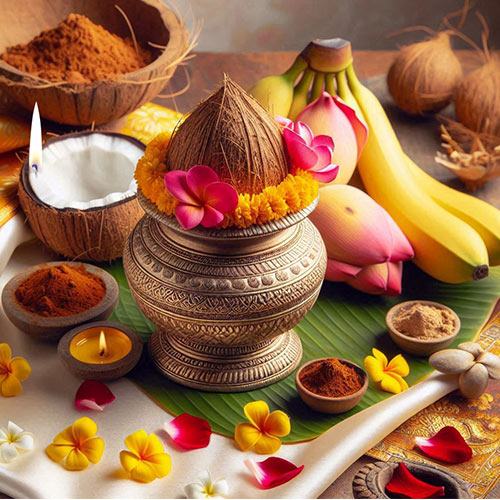

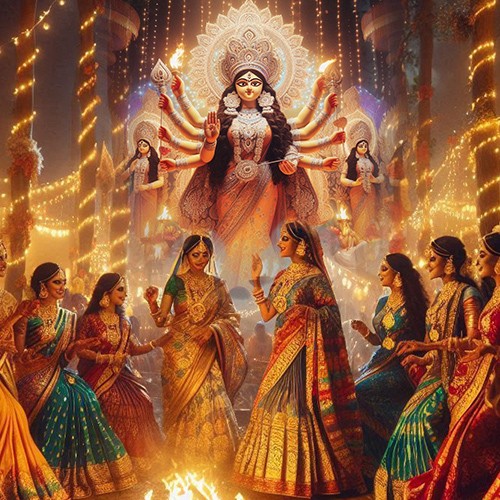
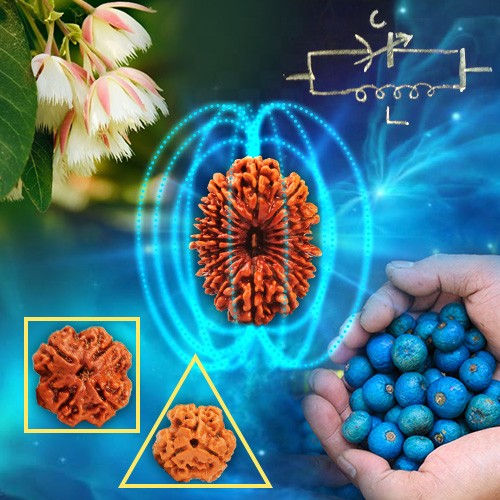

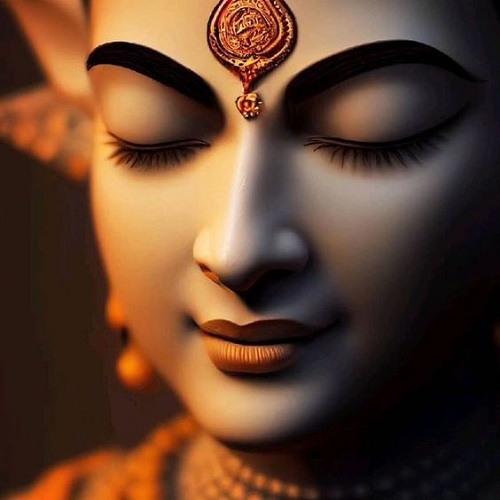
.jpg)
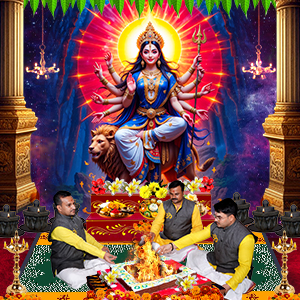
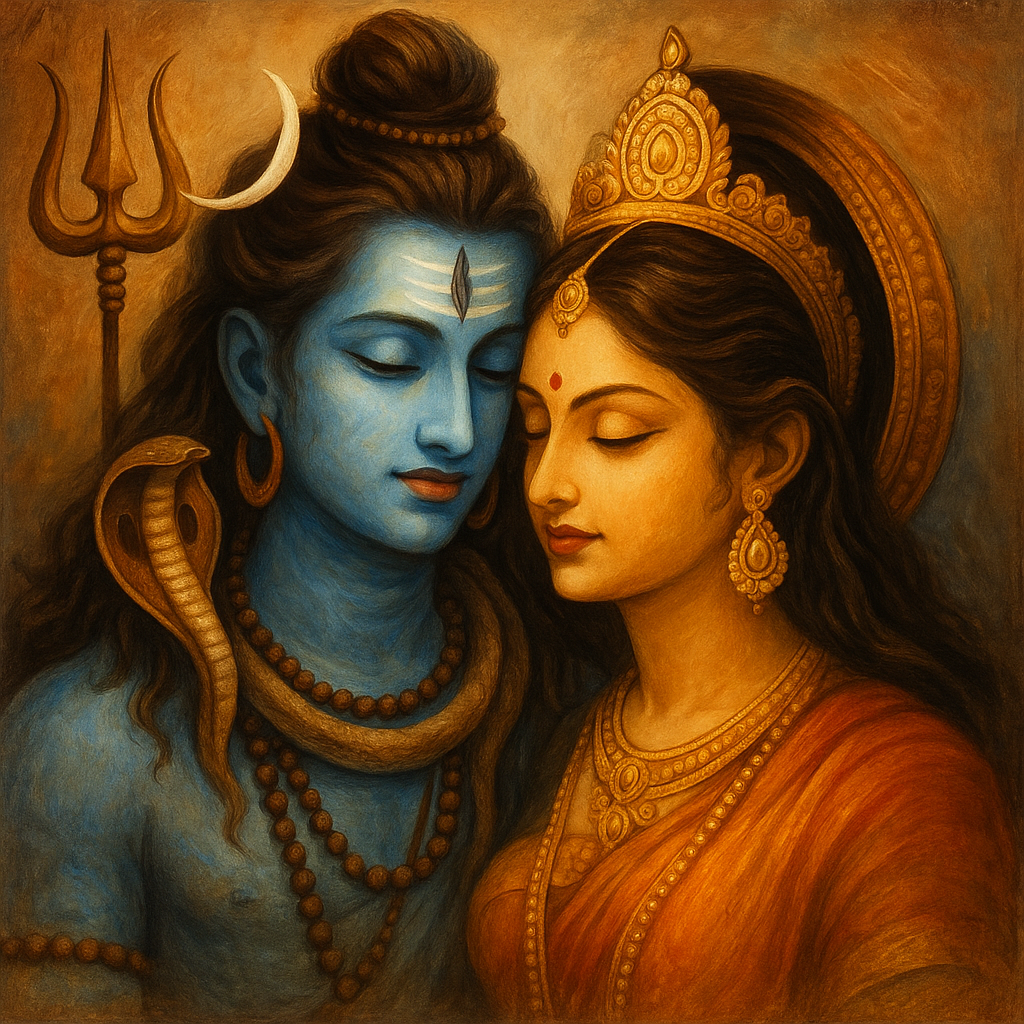
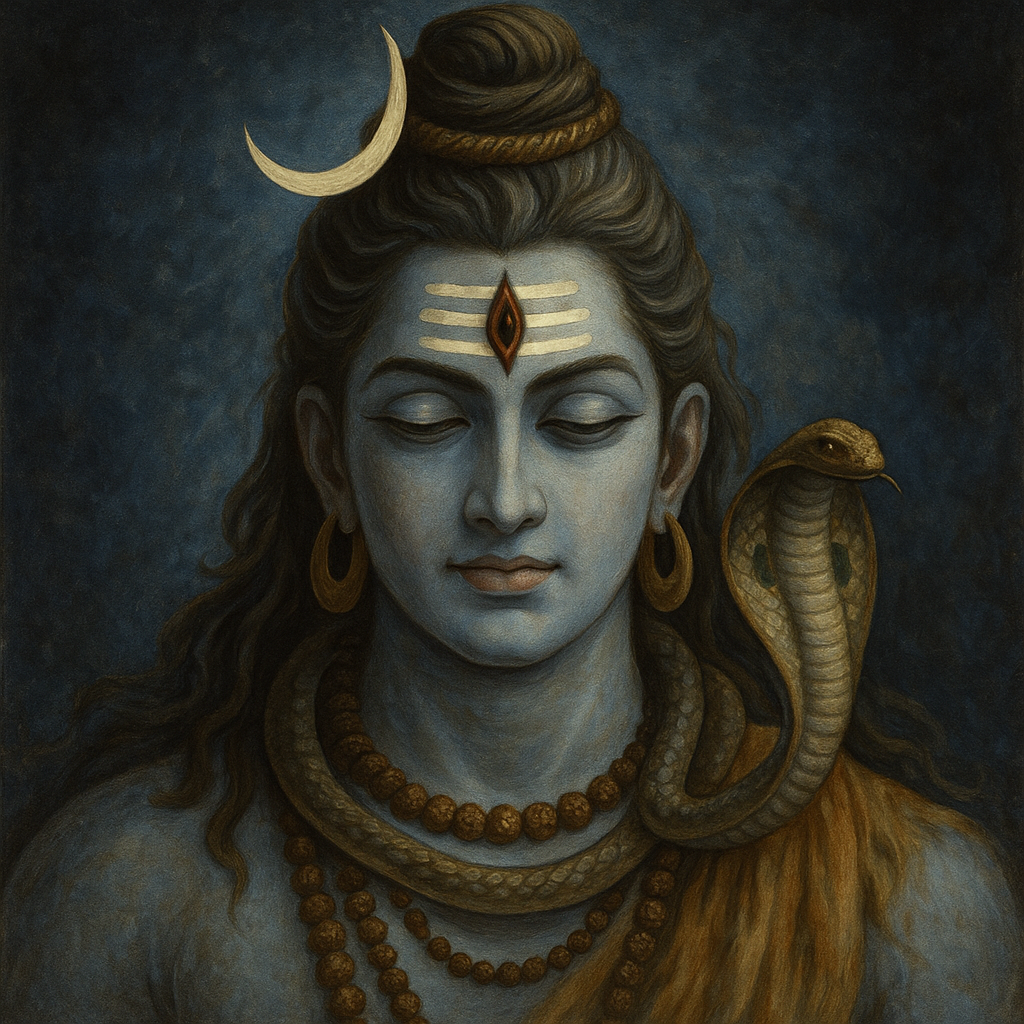
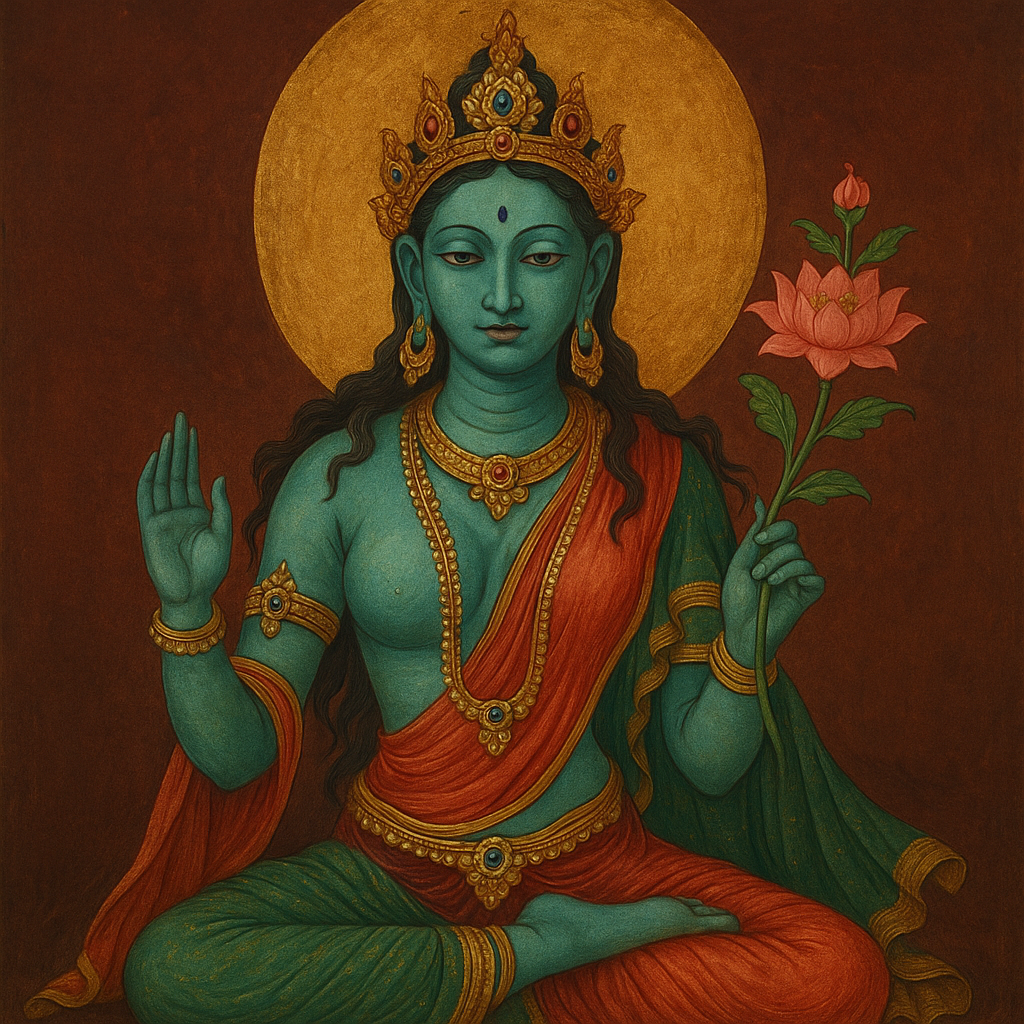
Nilesh bapu sonawane
|November 21, 2024
Nice
Sulochana
|May 29, 2024
Namaste Amma